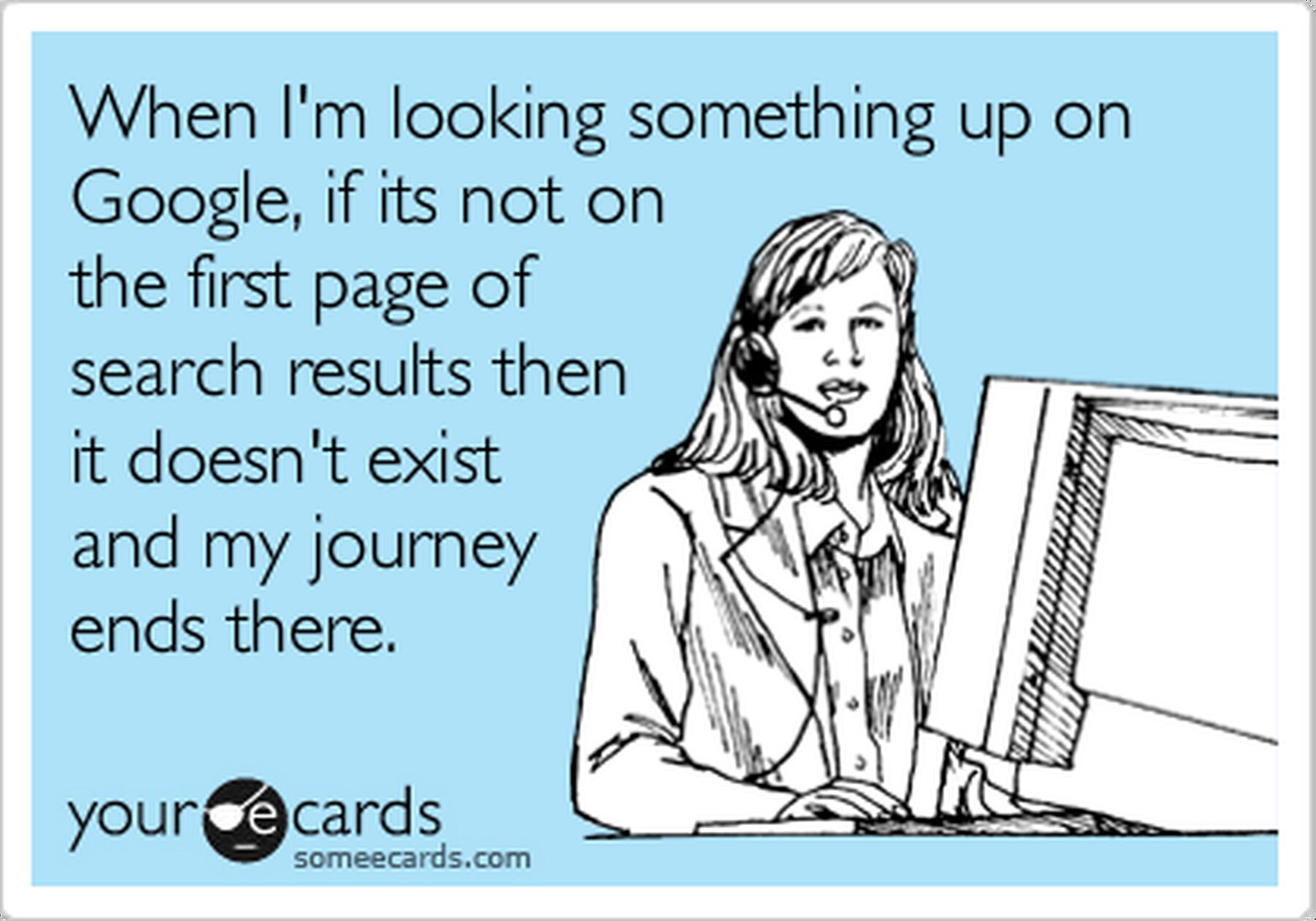Choosing to challenge yourself by learning the basics of Search Engine Optimisation (SEO) should be a fairly easy task right? I mean, how complicated could it actually be?
Boy, was I about to find out!

Once you get the hang of Search Engine Optimisation, it should all come naturally to you, much like riding a bike again many years after having mastered the art of pedalling and balance. The hard part however is getting your head around the ins and outs of SEO.
As you’ve probably deduced, the core of SEO has to do with all things "search": search engines (the most popular being Yahoo, Google and Bing), search sites, search directories, search systems and suchlike.
The following fact might shock you a bit.
SEO has actually been around since the '90s – can you believe it? A lot has changed since then though, from palm-sized computers to 3-D printing and bionic limbs, and with the growth of the digital sphere and faster technology spinning off into the future, SEO has grown to become a big deal for most companies.
So why exactly is SEO so important? Well, here are four rules that should clear things up for you:
1 The first results page of a Google, Yahoo or Bing search is your best friend
You’ve got to create your content in such a way that search engines love it. The aim is to get your blog/website on the first search engine results page (SERP).

The first page is important because hardly anyone looks beyond the first page of search results on any search engine, and if they do and still haven't come across your content, then to them it basically doesn't exist.
The challenge in trying to get on the first SERP is that everyone is vying for first place, so the competition to be at the top is quite fierce. Where you land up on search engine results all comes down to your content and relevant links that you've included on your website. Webmasters (web architects or developers responsible for maintaining one or more websites) are able to instruct spiders or web crawlers (internet bots that systematically browse the web for indexing purposes) not to crawl certain files or directories.
2 Put your bag of tricks away, far far away
In the past making your website SEO-friendly involved putting as many keywords as possible into your website copy. This sort of worked for SEO, but not so much when it came to how readable and understandable the website copy was.
Websites that used this method ended up with a whole lot of relevant and most commonly searched for keywords but a whole lot of irrelevant and confusing copy.
Remember SEO targets a variety of searches including image search, video search, local search and academic research.
3 Content is still king (and will probably always be)
SEO and content marketing go hand in hand. One won't work without the other.
When writing website copy you've got to create your content with the purpose of attracting search engine traffic – no tricks allowed.
Creating SEO-friendly content should be based on the following:
- Define your goals – are you driving sales, trying to increase website traffic, etc.
- Consider your audience
- Create a content plan – your content has more impact when you post it timeously
- Stay on top of your game when it comes to your website's analytics – you need to know what works and what doesn't in order to create even better content
4 Put your users first
What's the point of being on the first page of Google, Bing or Yahoo's search results if your users can't even navigate your site let alone understand what's written?
SEO takes into account a variety of factors when indexing results, such as how search engines work, what online users search for the most, common keywords, and which search engines are preferred by certain online users.
If you're not taking all of that into account when creating content for your website then you can kiss the first page of SERP goodbye.
Just remember, like all good things in life, getting your website to the first SERP takes a lot of time, hard work, thought and money. There are no short-cuts.



